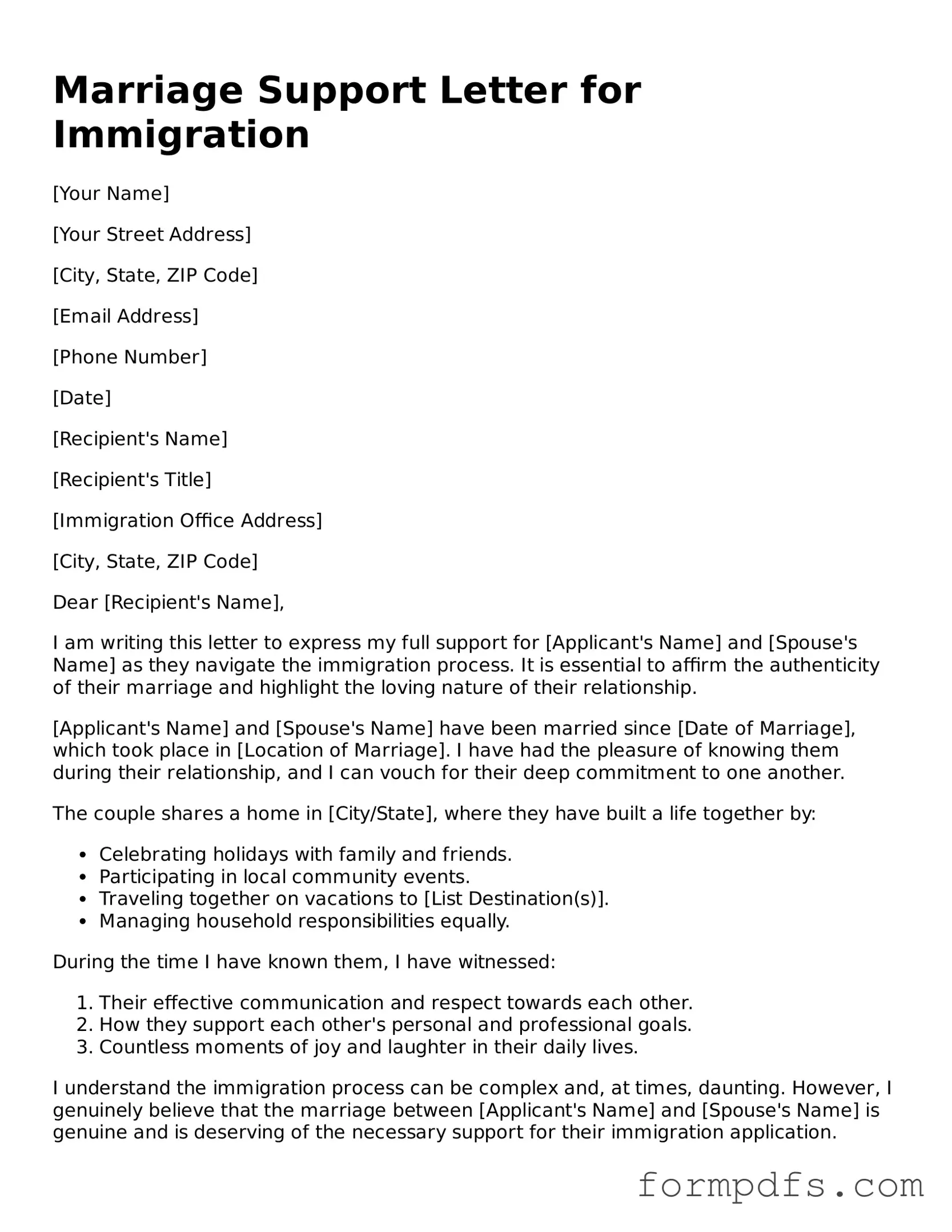What is a Marriage Support Letter for Immigration?
A Marriage Support Letter for Immigration is a document that provides evidence of a genuine marriage for immigration purposes. It is often submitted as part of the application process when one spouse is seeking a visa or permanent residency in the United States. This letter typically includes personal anecdotes, details about the relationship, and affirmations of the couple's commitment to each other.
Who should write the Marriage Support Letter?
The letter can be written by the U.S. citizen or permanent resident spouse, as well as friends, family members, or other individuals who can attest to the authenticity of the marriage. These letters should reflect the writer's relationship with the couple and offer insights into the couple's life together. It is important that the writer is credible and can provide specific examples that demonstrate the legitimacy of the marriage.
What should be included in the letter?
The letter should include several key elements. Start with the writer’s relationship to the couple, followed by a description of the couple’s relationship history. Specific details, such as how they met, significant milestones, and shared experiences, can enhance the letter's credibility. It is also helpful to include personal observations about the couple's interactions and their commitment to each other. Finally, the letter should conclude with a statement affirming the writer's belief in the authenticity of the marriage.
How long should the Marriage Support Letter be?
While there is no strict length requirement, a well-crafted letter typically ranges from one to two pages. It should be concise yet detailed enough to provide a clear picture of the couple's relationship. Quality matters more than quantity; focus on meaningful content that supports the case rather than simply filling space.
Is there a specific format for the letter?
There is no formal format mandated for the Marriage Support Letter, but it should be typed and printed on standard letter-sized paper. Including the date, the writer's contact information, and a formal greeting can add professionalism. The letter should be signed by the writer at the end. Keeping the tone respectful and sincere is essential, as it reflects the seriousness of the immigration process.
